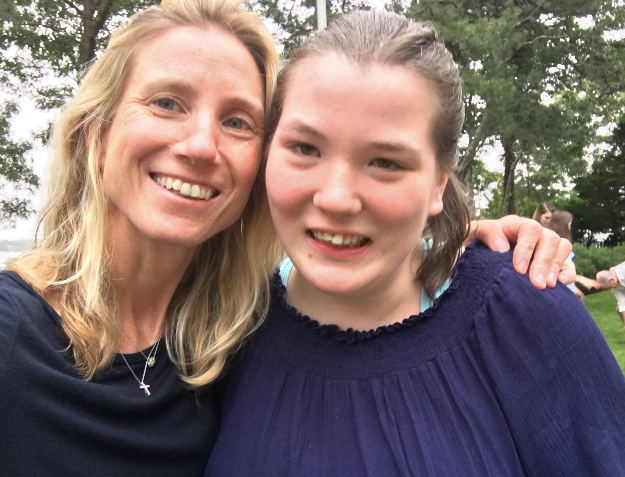
This week my daughter turns 16. Dressed in her favorite tie-dye shirt, she will open gifts of brightly colored stuffed animals and children’s picture books. We will sing happy birthday and help her blow out her 16 candles. She will laugh and clap in joy – and I will smile, as I so often do when I am with her.
This was not always the case.
Shortly after we received Erin’s diagnosis, Bill and I attended a conference for families living with this disorder. We were still reeling from the unexpected turn our lives had taken and the day-long lectures about what to expect were hard to take.
After watching a particularly disheartening (and dated) video about a seemingly punitive therapy called ABA – Applied Behavior Analysis, which had been suggested to us ― we decided to call it a day and retreat to our hotel room.
As the elevator door opened, a teenage girl appeared clutching a plush Cookie Monster doll. Beside her stood her mom, who ushered her out with a carefree smile – a smile that seemed to convey that this were the most normal scene in the world and there was not one thing wrong with this picture.
“Come on, Clare,” her mom said.
Clare smiled, squeezed the bright blue monster and bounded through the elevator doors – thrilled with herself, her mom and whatever adventure that lay ahead.
My heart sank. I couldn’t bear to think that this was where we were headed. Erin was still a baby – doing things that babies do. Though a little behind, she was not yet expected to walk or talk or act “appropriately.” She was entitled to meltdowns. She had teeth pushing through her gums for goodness sake – how could anyone keep it together with that happening? (Prior to her diagnosis, when I had no idea why she cried for hours and needed to be held 98 percent of the day, and night, I blamed most of it on teething.)
So she cried – a lot – and startled easily. Many babies do. The point is she was still a baby. We were still working our way through the outfits and gifts that arrive for a firstborn. I pictured her in her tiny blueberry sundress with matching floppy hat and wanted to crumble.
We left that conference early and returned to the babies at home. We dove head first into Early Intervention, and though I held it at bay for about nine months eventually enlisted Erin in a 40-hour-a-week ABA program. We built a team of exceptionally dedicated therapists who rallied around and guided us through those early days.
As Erin grew, we logged countless hours combing the city for sensory gyms, special needs activities, schools and specialists who could accommodate us. This was not the routine of a typical toddler. As the months and years passed though I grew less interested in what was “normal” and focused on what she needed.
Gradually, I admitted to myself and everyone around me that the meltdowns were due less to teething and more to sensory and language deficits. I learned to accept and soon to embrace that my daughter experienced the world differently than most – and by extension, so did I.
It’s a learning curve best captured in the special needs world’s mantra essay: “Welcome to Holland.” You planned a trip to Italy but ended up in Holland. You were not prepared. You envisioned Tuscany’s rolling hills, the Amalfi Coast and Coliseum. You ended up with tulips ― and Cookie Monster. And while it’s not a trip or story line you might have chosen, it’s the one you’re living. It’s your story and the craziest part of the whole thing is the gratitude you begin to feel for this unexpected journey.
Looking back, I think I know why Clare’s mom was smiling. She had walked far enough alongside her daughter to find and to appreciate the rhythm. She had lived through enough bad days to know, however dark, they would be followed by good. She knew there were things far worse than having a teen who showers affection on all those she loves, moms and muppets alike.
At that juncture this lesson was still a ways off for me and fast forwarding 15 or 16 years was all too much. Comparing those freeze frames, I was missing the moments– all the days, hours and minutes that lead from a to z – the impossible and the miraculous, the setbacks and small victories, the kindness of doctors and therapists and friends and strangers who would take the time to shape and mold my daughter and me into the pair we are today. One grateful mom and one tie dye clad teen clutching any one of Sesame Street’s finest ― full of joy.